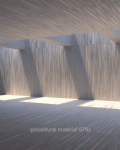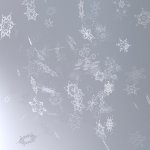Joel, I'm sorry for causing confusion. :redface:
I promise I'll stick with you until we got that sorted out!
There may be a bug involved with the half-split preview of the multiply node in your version (#5) vs mine (#6).
This is complicating things and I don't know the reason but I don't think it's your fault when the same file looks differently on our screens.
Let's put that aside for a moment (maybe we need to ask others to look and post screenshots) and continue with your last file.
The good news:
The UV material in my node editor looks exactly like your screenshot!
Now for the correction:
That's probably my fault because I didn't attach a file and also didn't explain this point:
You used the -2 factor in all three channels. That means the material is flipped three times in all three dimensions. This includes the z-dimension which is front vs back on the small preview ball in the nodes.
That makes it impossible to compare two turbulences side by side.
To do that you need to stick to the x (left-right) and/or y(up-down) axes.
I corrected the multiply node in the 3D material to -2,0,0 and now you can see how both nodes show mirrored previews (maybe you try 0,-2,0; 0,0,-2; -2,-2,0 and other combinations to make yourself familiar what axis has which effect on the preview).
Then you introduced a second row with a voronoi texture. Unfortunately this texture doesn't stick to the objects scale factor but has its own.
For this you need an extra multiply node with the factors -8,0,0; I put that in the new file.
Now for the UV material. This is how it looks on my screen right after I open your symmat3.jas file from post #7, below the corrected version from symmat4.jas file attached in this post:


What did I change?
The turbulence node has scale values of 8,8,8; that needs to be multiplied with the values in the multiplyadd node.
So instead of 0,0,0/1,0,0/-2,0,0 it must be set to 0,0,0/8,0,0/-16,0,0.
I guess this is all very confusing but hopefully checking the new file will help you to get familiar with the effects of those many numbers.
Again the second row with the voronois needs their own multiplyadd:
The voronoi texrtures come with scale values 1,1,1 but internally that is (also for checkerboard and cellnoise) 4,4,4 so that needs to be factored in at the multiplyadd to the result of 0,0,0/4,0,0/-8,0,0.
Now back to the UV multiplyadd discrepancy:
Please check if the UV material of the symmat4 file from this post looks like my second screenshot above.
If not, we need to dig further and maybe ask others which display is the true one.
Sorry again for my ramblings but hopefully you'll get something out of this,
see you soon!















